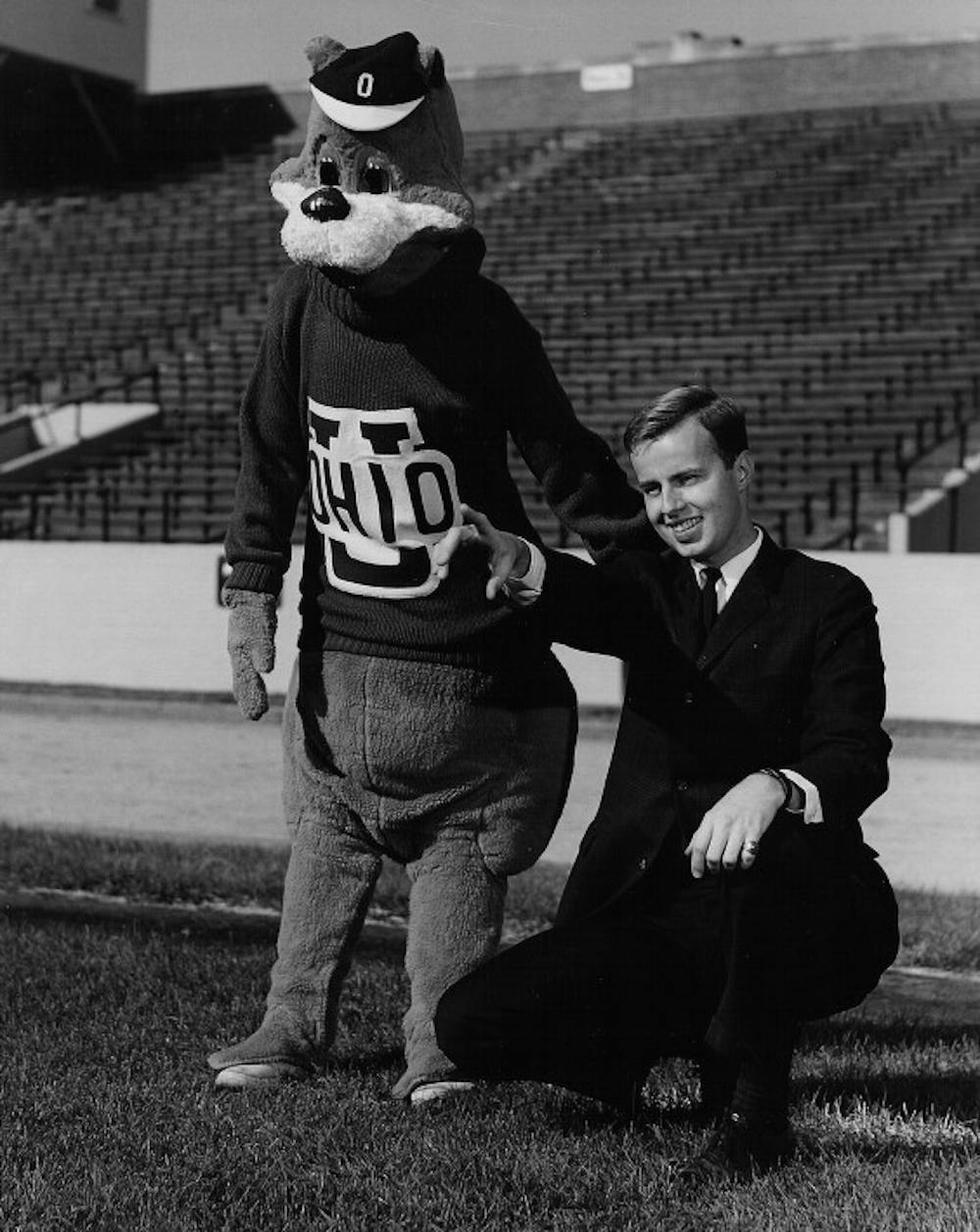Envision Ohio University festooning in blue and white décor, lacking a single drop of green embellishment and completely bobcat-less.
OU was not always green and white, nor was the fierce and energetic Rufus its mascot. For several years OU sported blue-and-white colors and lacked a nickname and an official mascot.
In 1925 — 29 years after adopting the colors green and white — the athletic board decided it was time OU had its own nickname. After a campuswide competition, during which several nicknames were nominated, the bobcat won over OU students and staff because of its clever, witty personality.
If it weren’t for Hal H. Rowland, who nominated the bobcat moniker, OU might have never promulgated its “Bobcat” pride.
In 1960, more than three decades later, the men of Lincoln Hall took it further. As Athens prepped for Homecoming festivities, the first incarnation of the bobcat mascot was prepping for debut.
The first person to don the whiskered costume was Dan Nichols, who graduated in 1966 with a master’s degree in administration and was a sophomore at the time.
“I got a lot of finger-pointing and laughing, and everyone was just having a good time,” Nichols said.
Thomas Schantz, a resident in Lincoln Hall at the time, called businesses in New York to get all the pieces for the costume together for that first appearance in the ’60s, Nichols recounted.
A tradition started with the men who first took needle to faux fur to keep the privileged mascot duties within the then-all-male Lincoln Hall, said Patrick Donadio, a former resident director of Lincoln in 1980 and ’81.
During his time at OU, Donadio also worked with the athletic department to help choose people to don the bobcat costume.
“In order to be in this position, I actually had to do a basketball game and football game in the costume so I could better understand more about what it would be like,” Donadio said.
The original costume included fuzzy brown pants, an OU sweater, a papier maché head and two big pillows — one for the front and one for the back. Only people 5-foot-8 or shorter could fit into the uniform.
“Being the mascot was a thrill because fans would come and yell, ‘Hi, Mr. Bobcat,’ and little kids would come shake your hand, give hugs and sometimes give your tall a little tug,” Donadio said.
There used to be a bobkitten back in the ’70s as well. Sometimes the bobkitten and the bobcat would put on a little show and dance together for OU fans, Donadio explained.
Different costumes passed through the locker rooms, and the Lincoln Hall nepotism gradually faded. Then in 2006, OU’s current mascot, Rufus, was introduced.
More than 500 people suggested names for the mascot. Rufus, the second half of the species name for the bobcat, Lynx rufus, also acknowledged one of the founders of Ohio University, Rufus Putnam.
“People think you just walk around in the costume, act goofy and do your own thing, but it’s a lot of work and Rufus has his own attitude,” said Liam McLaughlin, last year’s Rufus.
Whether it were the costume from previous years or the current Rufus gear, the former mascots agreed the costume acts as a constant heat blanket.
“I would wear nothing but my underwear and undershirt under it,” McLaughlin said.
tg143208@ohiou.edu






